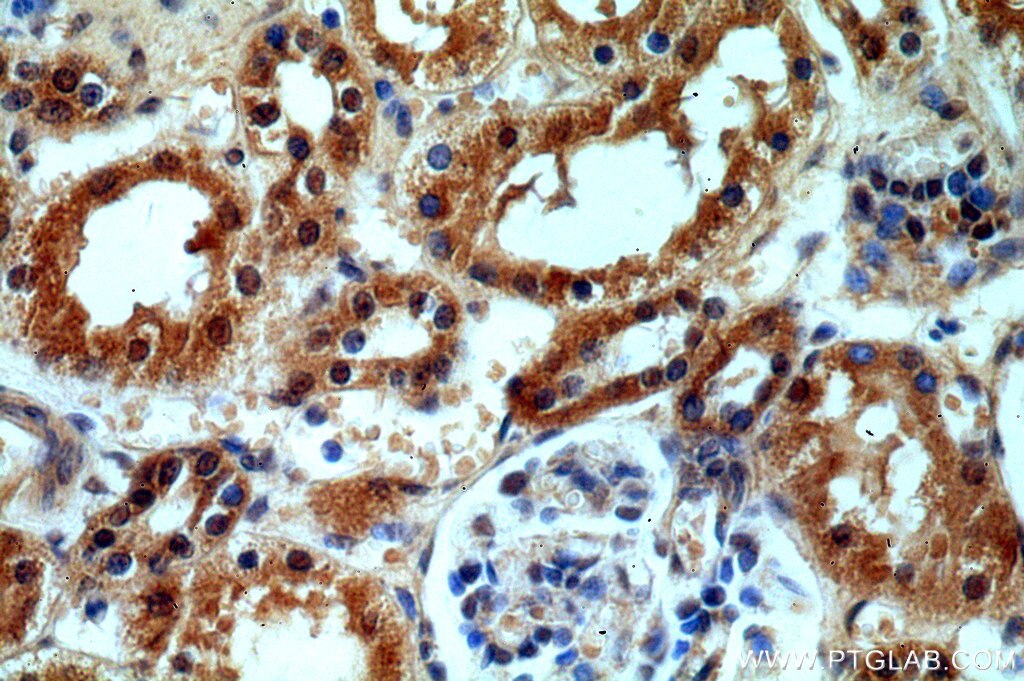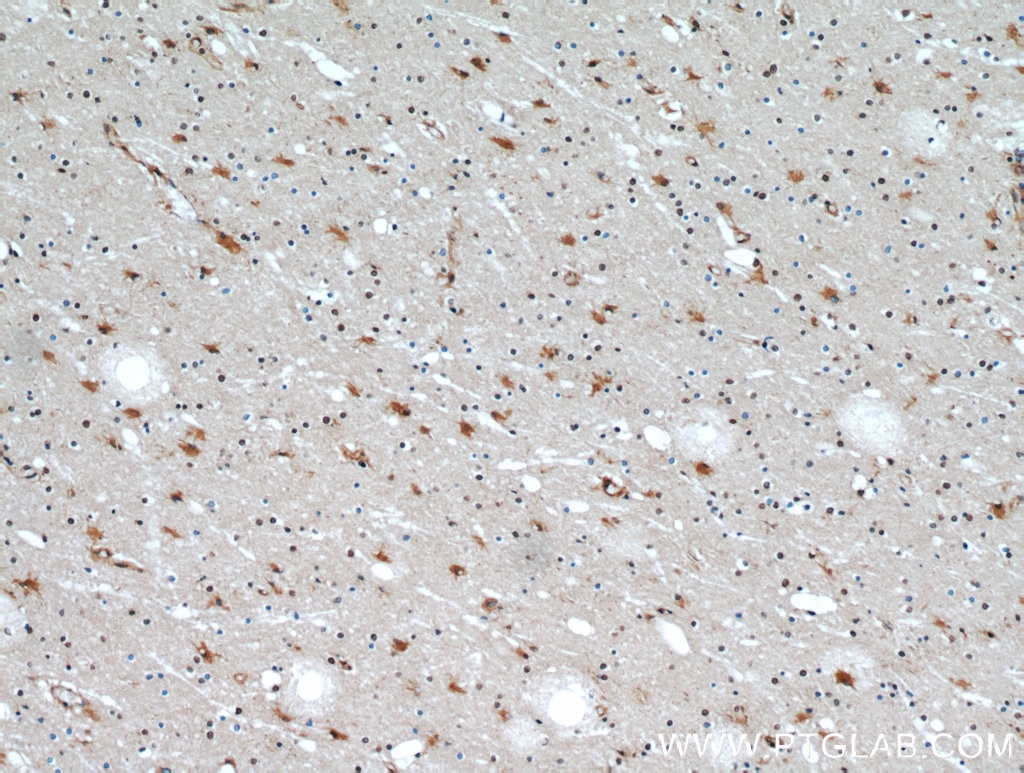- Phare
- Validé par KD/KO
Anticorps Polyclonal de lapin anti-HECTD1
HECTD1 Polyclonal Antibody for WB, IF, IHC, ELISA
Hôte / Isotype
Lapin / IgG
Réactivité testée
Humain, souris
Applications
WB, IHC, IF/ICC, ELISA
Conjugaison
Non conjugué
N° de cat : 20605-1-AP
Synonymes
Galerie de données de validation
Applications testées
| Résultats positifs en WB | cellules HEK-293, cellules HeLa, tissu cérébral de souris, tissu cérébral humain |
| Résultats positifs en IHC | tissu rénal humain, tissu cérébral humain il est suggéré de démasquer l'antigène avec un tampon de TE buffer pH 9.0; (*) À défaut, 'le démasquage de l'antigène peut être 'effectué avec un tampon citrate pH 6,0. |
| Résultats positifs en IF/ICC | cellules HeLa |
Dilution recommandée
| Application | Dilution |
|---|---|
| Western Blot (WB) | WB : 1:500-1:3000 |
| Immunohistochimie (IHC) | IHC : 1:50-1:500 |
| Immunofluorescence (IF)/ICC | IF/ICC : 1:10-1:100 |
| It is recommended that this reagent should be titrated in each testing system to obtain optimal results. | |
| Sample-dependent, check data in validation data gallery | |
Applications publiées
| KD/KO | See 2 publications below |
| WB | See 9 publications below |
| IF | See 2 publications below |
Informations sur le produit
20605-1-AP cible HECTD1 dans les applications de WB, IHC, IF/ICC, ELISA et montre une réactivité avec des échantillons Humain, souris
| Réactivité | Humain, souris |
| Réactivité citée | Humain, souris |
| Hôte / Isotype | Lapin / IgG |
| Clonalité | Polyclonal |
| Type | Anticorps |
| Immunogène | HECTD1 Protéine recombinante Ag14581 |
| Nom complet | HECT domain containing 1 |
| Masse moléculaire calculée | 2612 aa, 290 kDa |
| Poids moléculaire observé | 290 kDa |
| Numéro d’acquisition GenBank | BC006237 |
| Symbole du gène | HECTD1 |
| Identification du gène (NCBI) | 25831 |
| Conjugaison | Non conjugué |
| Forme | Liquide |
| Méthode de purification | Purification par affinité contre l'antigène |
| Tampon de stockage | PBS avec azoture de sodium à 0,02 % et glycérol à 50 % pH 7,3 |
| Conditions de stockage | Stocker à -20°C. Stable pendant un an après l'expédition. L'aliquotage n'est pas nécessaire pour le stockage à -20oC Les 20ul contiennent 0,1% de BSA. |
Informations générales
HECTD1 (E3 ubiquitin-protein ligase), which accepts ubiquitin from an E2 ubiquitin-conjugating enzyme in the form of a thioester and then directly transfers the ubiquitin to targeted substrates,may be required for development of the head mesenchyme and neural tube closure.It is also involved in sporadic Parkinson's disease(PMID:16714300).This protein is specific to HECTD1.
Protocole
| Product Specific Protocols | |
|---|---|
| WB protocol for HECTD1 antibody 20605-1-AP | Download protocol |
| IHC protocol for HECTD1 antibody 20605-1-AP | Download protocol |
| IF protocol for HECTD1 antibody 20605-1-AP | Download protocol |
| Standard Protocols | |
|---|---|
| Click here to view our Standard Protocols |
Publications
| Species | Application | Title |
|---|---|---|
Mol Cell Condensin I and II Complexes License Full Estrogen Receptor α-Dependent Enhancer Activation. | ||
J Neurosci Circular RNA DLGAP4 ameliorates ischemic stroke outcomes by targeting miR-143 to regulate endothelial-mesenchymal transition associated with blood-brain barrier integrity. | ||
Cell Biosci Involvement of HECTD1 in LPS-induced astrocyte activation via σ-1R-JNK/p38-FOXJ2 axis.
| ||
Cell Microbiol The serine/threonine protein kinase of Streptococcus suis serotype 2 affects the ability of the pathogen to penetrate the blood brain barrier. | ||
Hum Cell Nucleoporin 93, a new substrate of the E3 ubiquitin protein ligase HECTD1, promotes esophageal squamous cell carcinoma progression | ||
Sci Rep Proteasomal turnover of the RhoGAP tumor suppressor DLC1 is regulated by HECTD1 and USP7.
|
Avis
The reviews below have been submitted by verified Proteintech customers who received an incentive forproviding their feedback.
FH Nick (Verified Customer) (04-20-2022) | Excellent stuff. Highly recommend.
|











